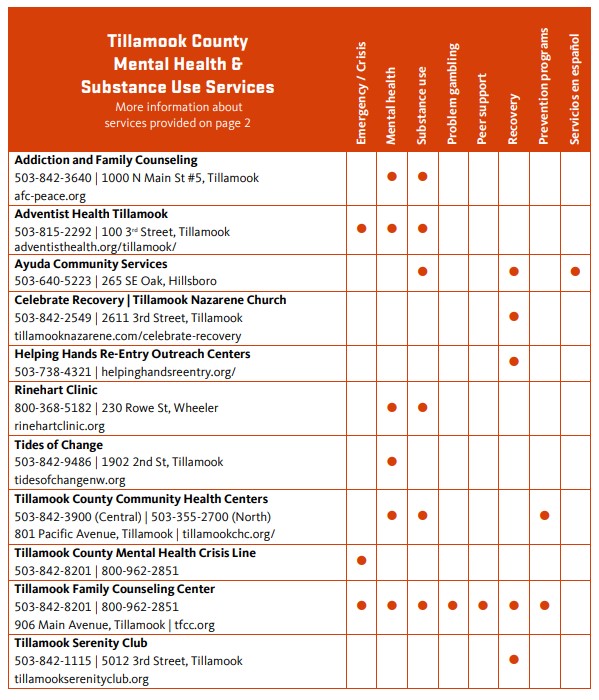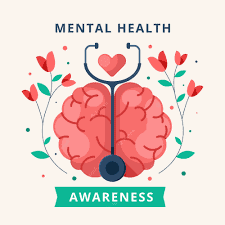By Leanna Coy, FNP
The Pioneer will periodically publish information to educate the Tillamook County community about mental health awareness (not just during Mental Health Awareness momth.) The goal is to bring hope and help to those with mental health issues and those who know someone who may need assistance managing their mental health. This article addresses mental health issues in children.
Why Children’s Mental Health Is Important
Like physical health, mental health is crucial to a child’s well-being. Good mental and physical health improves children’s whole quality of life. When untreated, mental health issues add stress to the child. Children may express more aggressive behaviors and struggle to develop healthy peer relationships. They may withdraw from family and social interactions. Children’s ability to learn becomes affected due to more difficulty concentrating and retaining information. These negative impacts have a ripple effect lasting into adulthood.
Mental health disorders in children are characterized as serious changes in how they usually learn, behave, or handle their emotions. They have increased distress and difficulty getting through their day. A child’s symptoms may interfere with school, play, and home life.
How Many Children Have Mental Health Disorders?
An increasing number of children are dealing with mental health disorders. National estimates put one in five children ages 3-17 as having a mental health issue. This percentage began rising before the pandemic and continued to worsen after. A report from the Health Resources and Services Administration (HRSA) found the number of children ages 3-17 diagnosed with depression increased by 27% between 2016 and 2000, with higher numbers for children living below the poverty line.
Nationally, the most common mental disorders in children are attention-deficit/hyperactivity disorder (ADHD), anxiety, depression, and behavior disorders. Collin Smith, LCSW, sees students from the Neah-Kah-Nie School District at the Neah-Kah-Nie Student Health and Wellness Center at Neah-Kah-Nie High School. He notes the most significant issues he sees children struggling with include anxiety, depression, trauma-related issues, and substance abuse. “Addressing these issues often requires a combination of individual therapy, family support, and community resources to ensure comprehensive care and support for affected children,” states Smith.
Smith states, “Several factors contribute to the mental health issues faced by children” These include:
Socioeconomic Challenges: Poverty, food insecurity, and lack of stable housing can create significant stress and anxiety for children.
Family Dynamics: Issues such as parental substance abuse, domestic violence, and divorce can contribute to a child’s mental health struggles.
Community Environment: Limited access to recreational activities, social isolation, and the various social challenges for minors living in a rural community can negatively impact mental health.
School-Related Stress: Academic pressure, bullying, and lack of support in school can contribute to anxiety and depression.
Access to Mental Health Services: Insufficient access to mental health care and resources can exacerbate these issues, making it difficult for children to get the help they need.
Recognizing the Signs
It can be challenging for a parent to know if their child’s moods or behaviors are typical for their age group or if a problem needs to be addressed with a healthcare provider. Signs of good mental health in children include affection, curiosity, and self-control.
Signs to watch for in younger children:
- Struggling at school or a recent decline in grades
- Constantly moving about, except when watching videos or playing video games
- Frequent tantrums or irritability
- Lack of interest in playing with other children or having trouble making friends
- Often seem worried or fearful
- Complaining of stomachaches or headaches much of the time without any apparent medical cause
- Not sleeping enough, daytime sleepiness, nightmares, or sleeping too much
Signs in older children and adolescents:
- Lack of interest in things they used to enjoy
- Socializing less with friends and family
- Self-harm behaviors, like cutting or burning their skin
- Lack of energy, sleeping too much, or sleeping during the day
- Episodes of high energy and activity, and seem to need less sleep than usual
- Smoking, drinking alcohol or using drugs
- Exercising excessively, severely restricting their diet, or worrying about gaining weight
- Thoughts of suicide
Discuss any behaviors or emotions lasting several weeks that cause distress to the child or family with a healthcare provider. This includes behaviors that keep the child from functioning normally at home or school.
Getting Help
Frequently, mental health disorders will continue into adulthood. The CDC estimates only 20% of children who need care for mental health receive it. Early diagnosis and treatment of mental health issues in childhood will improve the quality of life and lead to the best long-term outcomes.
According to Smith, parents can help their kids at home with the following. “Create a supportive environment with open communication and active listening to the child’s concerns.” He goes on to say, “Encourage healthy habits, such as regular exercise, a healthy diet, and adequate sleep. Limit screen time with activities that promote mental well-being.”
All children deserve a chance at a happy and healthy life. “If needed, don’t hesitate to reach out to mental health professionals for support and guidance,” says Smith. In Tillamook County, help is available from your child’s healthcare provider, Tillamook Family Counseling Center, the YMCA, and the Neah-Kah-Nie Student Health and Wellness Center. If you, your child, or someone you know needs immediate help, call or text the 988 Suicide and Crisis Lifeline.

References
NIH, Child and Adolescent Mental Health statistics https://www.ncbi.nlm.nih.gov/books/NBK587174/#:~:text=Nearly%2020%25%20of%20children%20and,in%20the%20decade%20before%202019.
NIH, Child and Adolescent Mental Health
https://www.nimh.nih.gov/health/topics/child-and-adolescent-mental-health
NIH, Children and Mental Health: Is This Just a Stage?
HHS, Mental Health for Adolescents
https://opa.hhs.gov/adolescent-health/mental-health-adolescents
NIH of Mental Health, Children
https://www.nimh.nih.gov/research/research-conducted-at-nimh/join-a-study/children
CDC, Data and Statistics on Children’s Mental Health
https://www.cdc.gov/childrensmentalhealth/data.html


